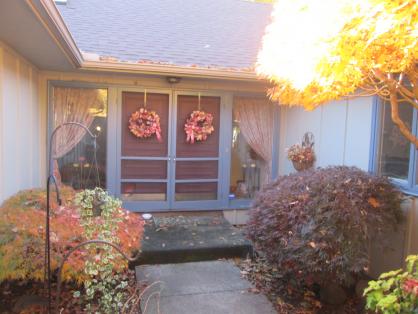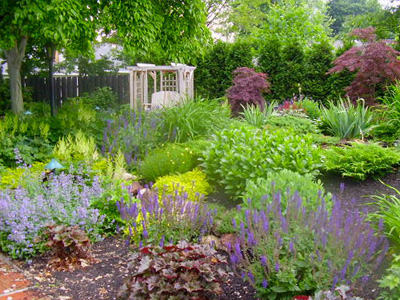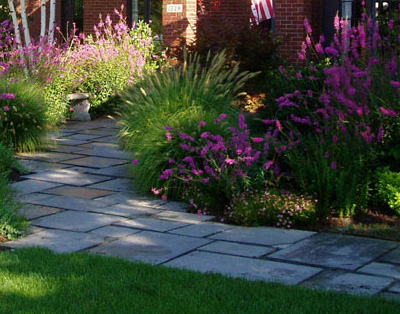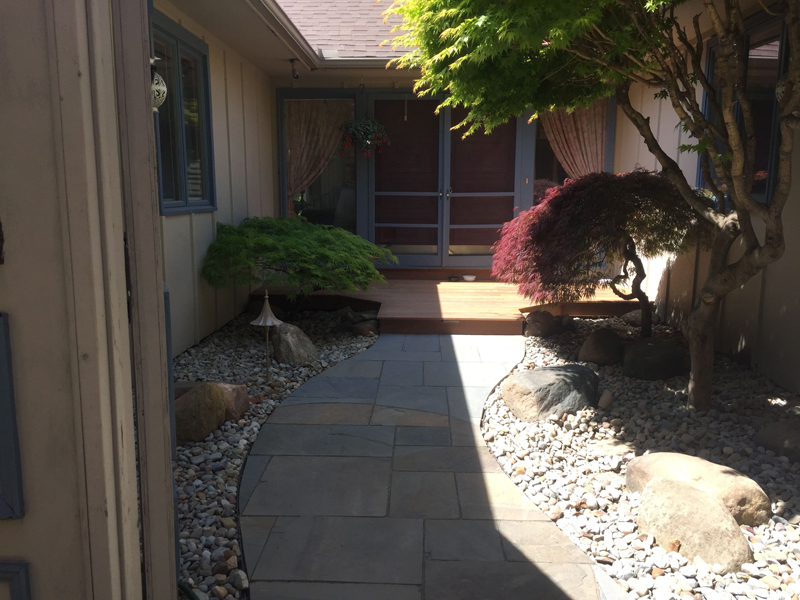It all starts with the call. Maybe you've seen our trucks in your neighborhood, talked to a friend, or searched the web to find out if we can assist you with your landscaping needs, but your first call or web inquiry is where our relationship begins. Once you take that first step, we will determine a time to get together to discuss your particular needs.
You may be interested in landscape management, tree work, or a special project, and the purpose of our first conversation is to define the objectives of the work you are interested in. When you make your inquiry, we try to collect as much information as possible about your project so we can put you in contact with the right person for the job. If you're not sure quite what you want, that's okay. We can assess your issues when we visit your property.
Depending on your particular needs, a landscape architect, designer, horticulturalist or arborist, will visit your property to assess the landscape need. The site visit helps to clarify the objectives of the work, define your landscape wish list, and helps us conduct a site analysis. It is critical to define the objectives so that we know that we are on track to meet your needs and complete the project the way you envision it.
Perhaps your objective is simply a better presentation for the front of your house. In order to accomplish this, we will put together a program specifically for you that may include things like seasonal color, trees to provide foreground, and a more welcoming walkway or approach to the front door. The style of the design may also be part of the program. For example, a cottage style garden versus a formal garden, or contemporary versus natural plantings. If you are uncertain, our designers have photos of other projects demonstrating different styles of plantings and landscapes that can help you decide what landscape is most appealing to you.
The site analysis allows our designer to assess the wide variety of factors that may impact your landscaping, including:
Some other factors may be wildlife considerations, such as deer traffic and neighboring influences. We are looking for any constraints, but more importantly, we are looking for opportunities to meet your specific goals.
Options or ideation allows the designer to look at the ways that we can meet your objectives with the opportunities and constraints we are presented with. This is the creative zone where we sketch out different options for the design. Putting options on paper is much easier than trying different possibilities in the field over and over again. The plan sketches, and either photo sketches or modeling, are techniques that we use for you and the designer to visualize the options. This technique has been used since the days of Humphrey Repton and his Red Book, when overlays of the existing landscape could show the potential changes.
Various options are weighed against the objectives and the program to see how well we have fit your needs and desires to the land. In a simple project, there may not be many options, but in something more complex, there may be many. Sometimes the site has more constraints limiting the options, sometimes there are more opportunities opening up many different options. Clear objectives, goals and program elements can help focus the design to exactly what you want.
A finished plan is developed with information to support the original objectives: details of how it is put together, plant selection, color selection of hardscape materials and the like.
A final budget is developed that takes us to the next important step: implementation. The implementation of the project is the realization of your vision. The design process continues with the layout and painting of the project onto the ground for the installation process to begin.
The designer oversees the process, interprets the work from your viewpoint, and reflects any nuances that were involved in the discussion. Our staff is highly skilled in their particular areas of expertise, whether tree pruning, landscape management, holiday lighting or landscape planting and construction. The craftsmanship takes over in the interface between owner, designer and landscape contractor, and the communication between them is what helps to make the landscape design/build process so effective.
When the implementation is complete, the design process still is not over. The next step is evaluation, during which we step back and see how well we have met our objectives. Is it the look you were envisioning? How are the plant materials growing in this exposure? How is the landscape being managed? Does your design concept call for more natural growth or regular trimming?
We want the installation to meet your needs. There may be something that you hadn't anticipated, or perhaps time has passed and your needs have changed. Maybe the kids have grown and its time to remove the swing set and install a vegetable garden. Re-evaluation will lead back into the cycle of the design process once again.
In larger projects the design process results in a master plan, where a piece of the plan can be accomplished one step at a time. This is easier to manage in terms of disturbance or interruption of the site, ease of budgeting, and for installation in prime season for the type of work desired. The master plan is comprised of the goals for your landscape and keeps you moving forward to your ultimate vision for your project.
Whether the project is large or small, from discussing the pruning of a tree, to designing an estate or community park, the process is much the same. With a small project, the process happens quickly. A more complex project may take more time, but it's worth the effort to get the results that you want.
Just a quick note to let you know how pleased we were with the job that both Tony & Gene did on our landscaping at our house. They were always there when we needed a question answered or a problem solved. We appreciated their attitude and would highly recommend your organization to anyone.
Thank You
The Kleins - Pat & Rick






